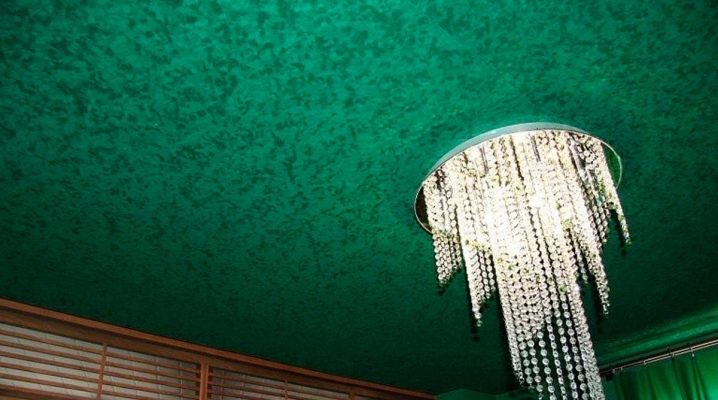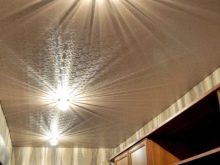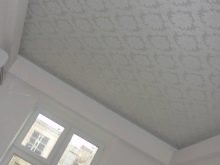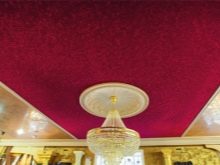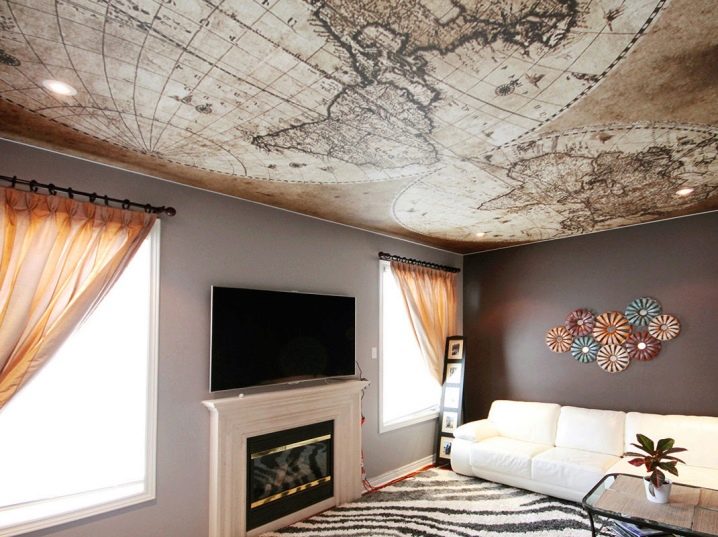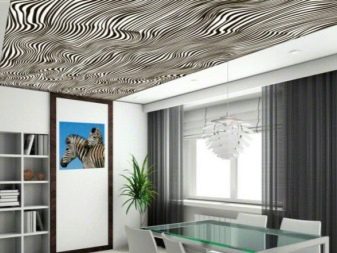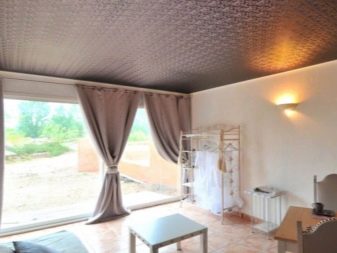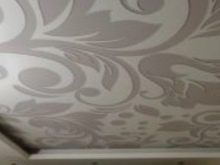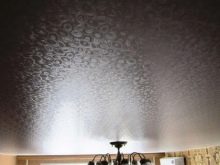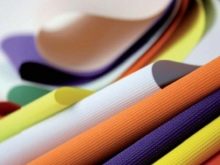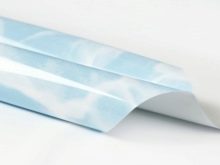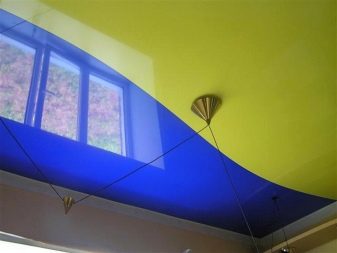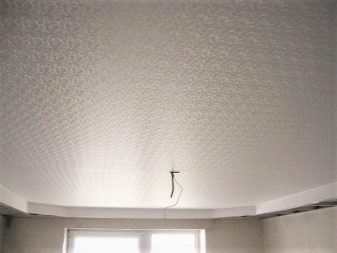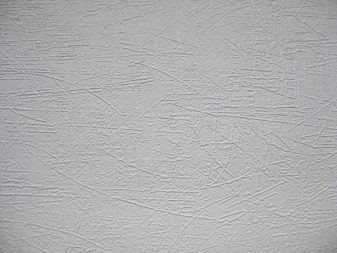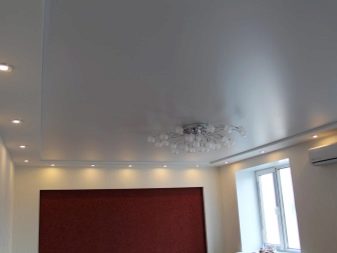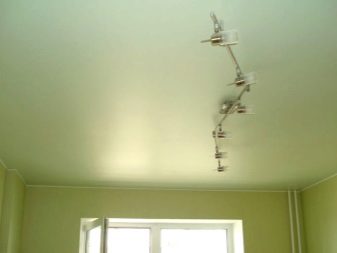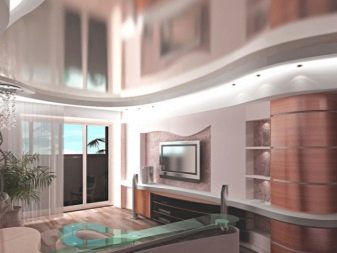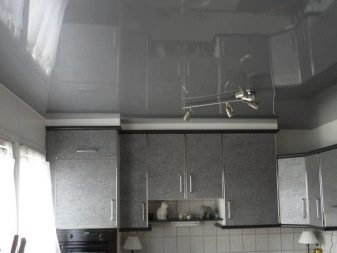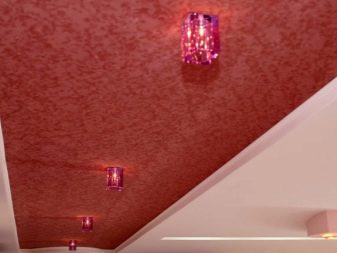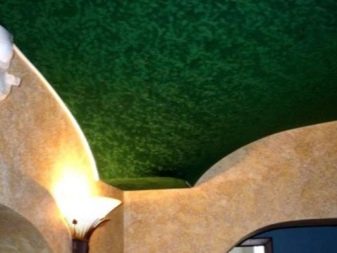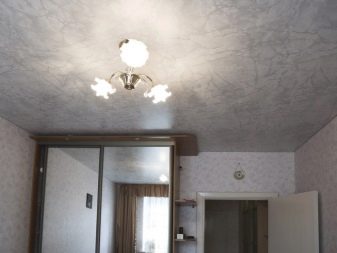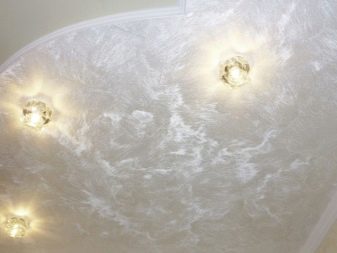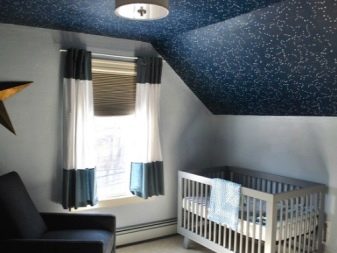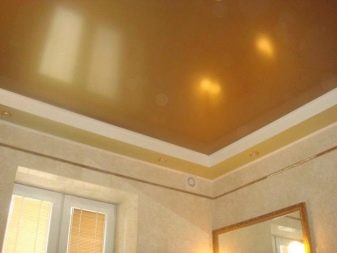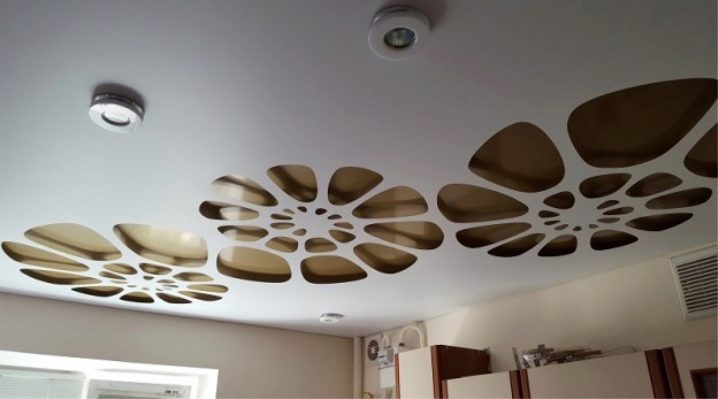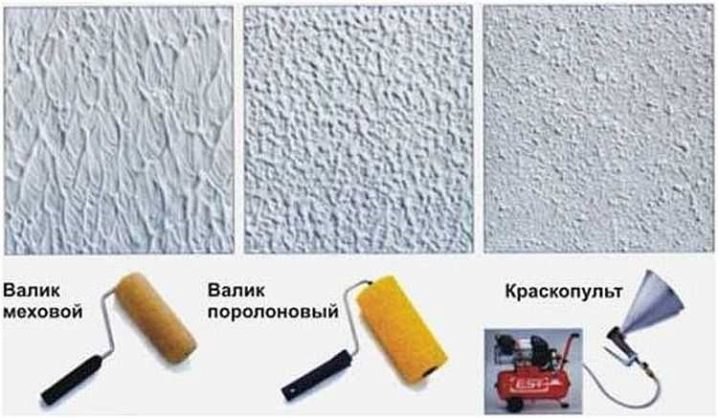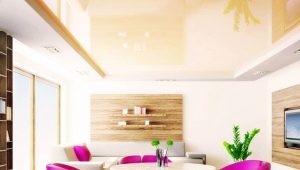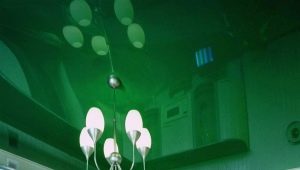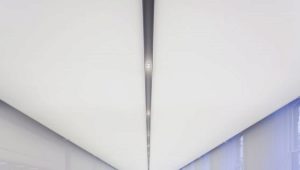Textured stretch ceilings: types and characteristics
Finishing the ceiling for a long time is no longer limited to plastering and painting. In place of these familiar options came textured stretch ceilings, which are diverse in their types and characteristic features. These are smooth surfaces created by stretching a special canvas from various materials with a specific texture.
Special features
Despite possible defects, the stretch ceiling helps to make the surface of the ceiling absolutely smooth. This type of construction is relevant for both residential and public, as well as public spaces. By itself, the suspended ceiling consists of a leaf and a fastening system that ensures its reliability. Fixed such a design throughout the area of the room. As a rule, the canvas is single or combined (assembled from separately welded parts).
For the construction of the original “sky” of a room, it is not at all necessary to spend big money - it’s enough to adhere to important indicators of the textured construction,which are relief drawing and light reflection. It is thanks to them that volume is achieved.
The spaciousness of the room and the special atmosphere will help to create a well-thought-out frame, properly selected texture of fabric or film, as well as lighting.
The usual decor of tensioned cloths is wood, stone, painted in different colors of the coating, but other options are possible, which depend only on the strength of the designer’s imagination. Even a simple one-level ceiling can be made unique if you choose the right color and texture. However, you can combine and seemingly incompatible things, in combination giving exactly the effect that is required.
The canvas for the ceiling can be fabric and polyvinyl chloride. In fact, there is a huge range of stretch fabrics for the ceiling: fabric, polyvinyl chloride, satin, matte, glossy, from which you can always choose the desired option.
In addition, they can be painted with their own hands, but this will require special dyes.
Species
The main materials for the production of suspended ceilings are PVC film and fabric. On this basis, textured ceilings are divided into 2 types.
- Seamless. Presented in the form of a thin fabric with a width of 510 cm, impregnated with special additives. Fabrics used for textured ceilings, elastic. In addition, they are moisture resistant thanks to a special varnish. The color is due to the corresponding polymer coating. This is the most durable option, because it has frost resistance, and in an emergency situation, the material is able to hold water of different temperatures. Moreover, seamless products belong to the class of safe, environmentally friendly products.
- Welded coating (suture). Created from polyvinyl film with a width of 1.3 to 3.2 meters. Since they have a seam, they are placed at a 90 degree angle to the windows. They have their advantages: they are not susceptible to burning (only melted), to the effects of aggressive chemistry. To avoid dust settling, such materials are treated with antistatic agents.
Polyvinyl film is made using special technology. This is an elastic product that, during installation, stretches onto the prepared frame when heated to 60-70 degrees. After cooling, such a ceiling is stretched and becomes smooth and even.The main properties of suspended ceilings can also be attributed to a long service life (30-40 years), a large range of colors and textures, quick installation and simple maintenance.
When choosing a ceiling material, one should pay attention to its design, special qualities and, of course, the texture on which the overall appearance of the ceiling depends.
Features of materials for ceiling construction
In addition to the different colors, products for suspended ceilings have special surface properties that distinguish them from each other. Let us consider in more detail the most common of them.
- Matte texture. The traditional, classic version, which in appearance is like a well-plastered coating. It is mainly used for straight planes. In any light, such a surface with a pattern and color is in fact not subject to change. At the same time material can be both smooth, and relief. Some prefer the presence of roughness, which makes such a ceiling more comfortable perceived vision.
- Glossy (lacquer) surface. Able to increase the amount of space. Used to create separate zones in the room, dark corners for this reason are smoother. These are, as a rule, light-reflecting options with mirror properties.Glossy texture looks great in both single-level and multi-level ceiling construction, well combined with a matte texture.
- Satin type of material its reflective characteristics are somewhere between matte and glossy surfaces. When light hits this canvas, it seems to be poured, and the color becomes deeper and more saturated. In general, this texture looks similar to a painted coating: it looks soft and silky, capable of creating an atmosphere of special comfort.
- Metallic - Another type of canvas with a characteristic metallic luster. The depth of the color of the coating varies with the angle and intensity of the lighting.
- Very original is suede textureimitating the features of natural leather, its velvety and visually noticeable warmth. This fabric can finish the ceiling in the living room or bedroom: it adds to the atmosphere a special charm and comfort.
- Stretch ceilings look interesting with marble texturemade under natural marble slabs of different shades. This option is necessary when the room is required to give an atmosphere of luxury.The coating is more suitable for the interior in a classic style.
- Silk cloth creates a steady illusion of natural silk fabric. It has a soft, subdued brilliance and is an ideal material for rooms with a sophisticated design.
- When the task is to create a particularly pompous, elegant type of room, for stretch ceilings is used mother of pearl texture coatingemitting natural pearl light.
It is not necessary to choose only one texture: some of them are perfectly combined with each other and make it possible to create an exceptional ceiling design.
The most constructive combinations are a combination of matte canvas with metallic or glossy and matte texture. In some cases, matte frame can be a frame for silk or suede fabrics.
Recommendations for self-staining
If you wish, you can create the desired texture of the stretch ceiling with your own hands. To do this, use special textured paint. Of course, only textile canvases are subject to dyeing.
Choosing the color of the stretch ceiling, you should consider certain nuances:
- Is it suitable for this room?
- interior style;
- color of furnish of furniture and decorative elements;
- total area and height of the room.
Painting is produced with acrylic dyes with a filler, which gives a certain thickness to the solution and thus helps to create not only the color, but also the desired texture. For drawing it is possible to use the roller or an airbrush.
When a large area of the residential compartment is recommended to use no more than three layers of the canvas, since the ceiling may be sagging due to the additional weight.
Professionals are advised to carefully select the color solution for the ceiling, bearing in mind the features of different textures:
- red, orange and yellow colors will make the room more comfortable and warm;
- blue, violet, white tones will increase the space of the room;
- Do not choose for living rooms too bright colors that are irritants: they are suitable for a closet, corridor or hallway;
- for bedrooms and nursery it is better to opt for the calm pastel shades of the ceiling;
- If the furniture in the room is distinguished by sophistication, then it is better to make a light gray ceiling with a matte texture.
With the help of textured ceilings, you can emphasize the style of the room, create a radically new environment, focus on individual elements of the decor. But we must always take into account the role of lighting: the optimal harmony of the room is achieved thanks to the peculiarities of the materials in combination with a certain lighting.
For more information about textured stretch ceilings, see the following video.
